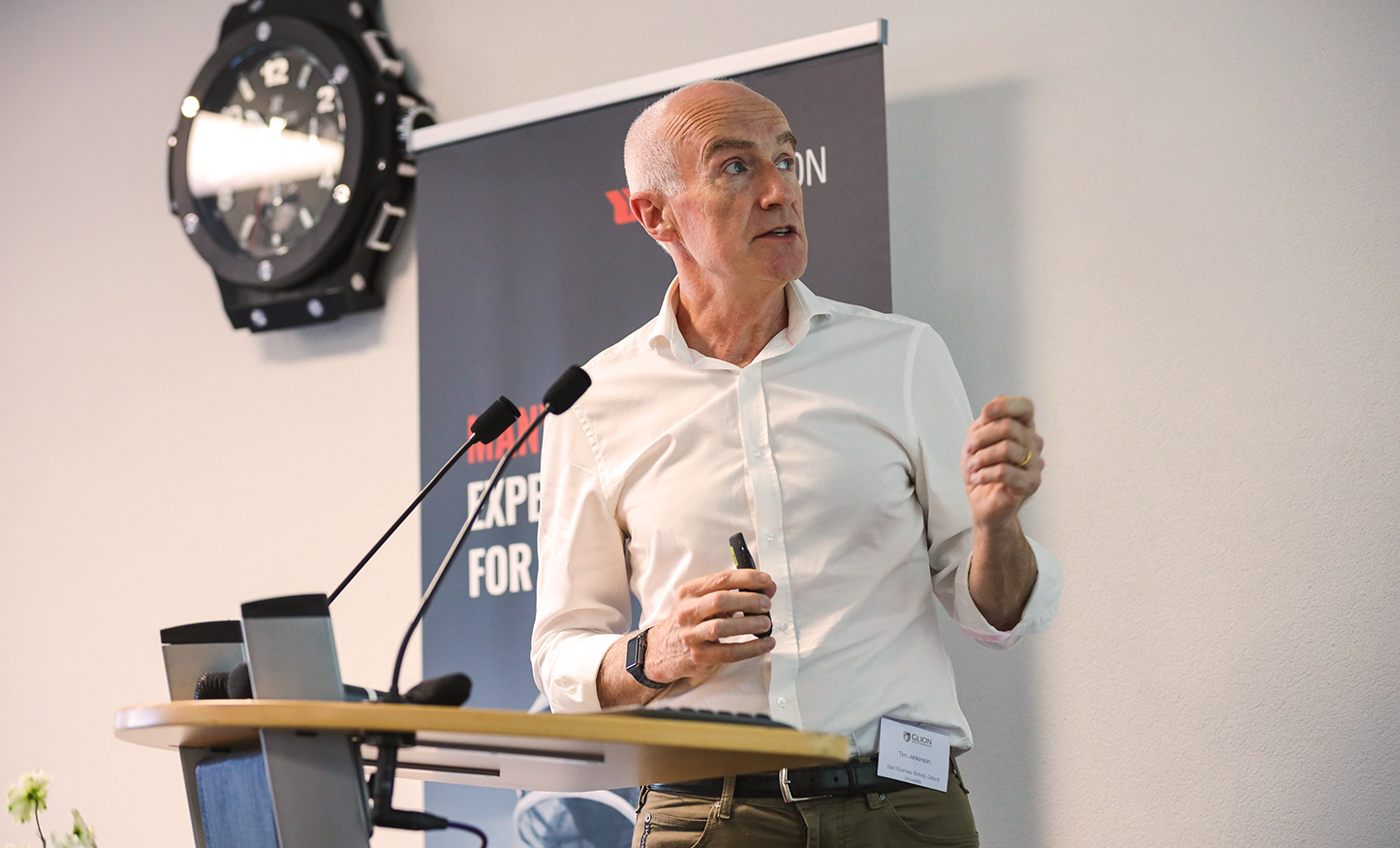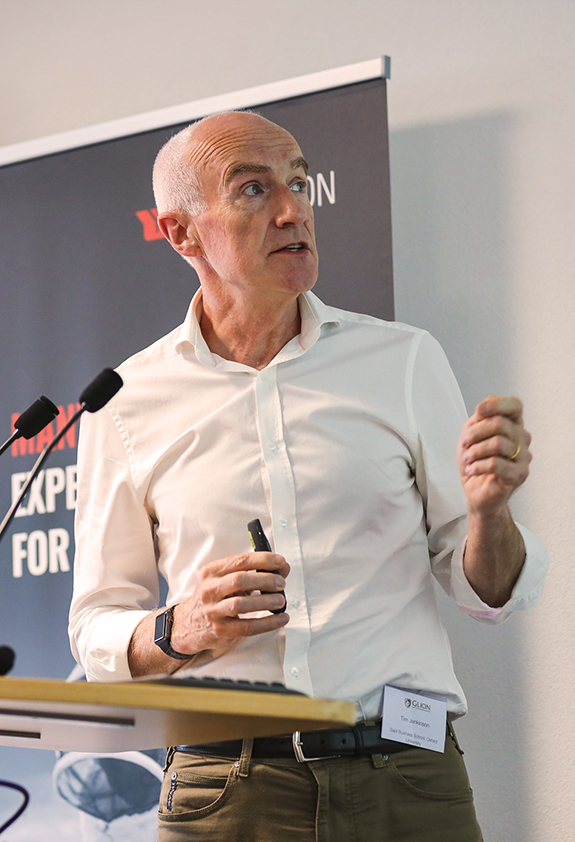


Academic research dominated Day Two of the 1stAnnual Glion Private Capital Conference. In the second part of our exclusive on-the-spot report, we highlight the array of papers that were presented and discussed…
A questioning mind is an essential asset for a successful academic. A robust constitution is also required when presenting to fellow academics, who didn’t hesitate to challenge every assumption and every methodology put before them on Day Two of the 1stAnnual Glion Private Capital Conference.
No fewer than 12 research papers were presented throughout the day, at least one of them for the first time in a public forum. The academics behind them had forensically examined the investor mindset, covering topics associated with private markets, private equity, real estate/infrastructure and venture capital.
Getting down to business
Prof. Tim Jenkinson, Professor of Finance at Said Business School, Oxford University, opened a busy day personally by chairing the session dedicated to private markets investing. First up was Elise Gourier, from ESSEC Business School. She presented a new methodology for modelling private market fund returns, working from a data pool covering 5,000 funds across 12 categories. The paper was reviewed and discussed by Amit Goyal, from HEC Lausanne.
The second paper was presented by Stephanie Larocque, from University of Notre Dame. It focused on cash flow timing, arguing that investors may not fully account for the effects of cash flow timing when calculating internal rate of return (IRR). Stephanie noted that the findings suggest some fund resources are wasted in generating high IRRs. Sara Tommar, from Neoma Business School, provided the peer review.
Tim Jenkinson was quickly back in action as his co-authored paper, ‘Why do private equity funds hold on to public equity?’, was the first to be discussed during session two. This session was dedicated to private equity and chaired by Prof. Ludovic Phalippou.
Prof. Jenkinson questioned why private equity funds find it hard to say goodbye to holdings in invested companies after they’ve listed publicly. Also, perhaps more pertinently, he asked why investors seem happy to pay ‘2 and 20’ to own shares they can readily access through open markets? Jens Martin, from University of Amsterdam, provided the discussion.
Tjark Eschenröder, from University of Cologne, then presented a paper that attempted to answer the question: ‘are the value drivers for primary buyouts the same as for secondary buyouts?’ The research modelling indicated that these value drivers do differ, across a range of valuation measures. Discussant for this paper was Francois Degeorge, from University of Lugano and SFI.
A change of pace closed the session, as Vadym Volosovych, from Erasmus University, investigated the ability of private equity investors to take the ‘long view’ and enhance value from ‘buy and build’ strategies. His conclusion: “It seems like private equity has found a new way to create value, through buy and build”. The paper was peer reviewed by Theolosis Dimopoulos, from HEC Lausanne.
Day Two keynote speaker was Prof. David Robinson, from Duke University, who examined investment timing to see if it impacted on value gain – and where. His research showed limited upside in practice, compared with a ‘steady-state’ investment model.
Six and out: Real estate, infrastructure and venture capital bring the curtain down
The afternoon session featured six more papers for discussion. Glion’s Director of Graduate Studies, Prof. Emmanuel Jurczenko, chaired a session dedicated to private real estate and infrastructure; topics which connect directly to the new MSc in Finance, Real Estate and Hotel Development that launches at Glion in London in September 2019.
Opening the session, Aleksandar Andonov, from University of Amsterdam, attempted to explain the phenomenon whereby public investors, such as pension funds and insurance companies, appeared to obtain inferior performance from investing in infrastructure assets than their counterparts among the private investor community. Discussant was Vesa Puriainen, from Imperial College.
One of the most eye-catching revelations from the presentation by Ulster University’s Martin Haran, was that private equity infrastructure funds were sitting on an estimated $179 billion of uninvested capital. “At current rates of investment that’s 12 years’ worth of dry powder,” he pointed out. The paper, ‘Performance and persistence in private equity infrastructure funds’, was reviewed by Zoran Filipovic.
Ohio State University’s Spencer Couts concluded the session, with his sole-authored paper ‘Private real estate and procyclical risk’, which received a peer review by Glion Senior Lecturer Andri Rabetanety. Andri is co-creator of the new MSc in Finance, Real Estate and Hotel Development and is himself a PhD candidate.
Last, but by no means least, venture capital investing formed the basis for the conference’s final session, chaired by organizing committee member Rüdiger Fahlenbrach.
Norwegian School of Economics’ Aksel Mjøs explained how his multinational team had whittled down tens of thousands of Norwegian start-ups to form a focused data pool covering 1,823 firms. These shared high growth potential as well as having received financial support from private equity and/or Innovation Norway. The aim of the paper was to discover some of the secrets of successful ‘early stage’ investments; the costs and the potential returns. The paper was discussed by Philip Valta, from University of Bern.
For Tereza Tykvova, from University of Hohenheim, connections and alliances were the chosen subject matter. Her co-authored paper attempted to prove the intuition that if two venture capital firms had connections from previous shared investments, it would make a clearer path for forging alliances between companies currently in their portfolios. The paper received its review from Marc Frattaroli, of EPFL.
Closing the conference was a debut presentation from Rustam Abuzov, from University of Lausanne and SFI. He asked: do venture capital (VC) firms create value through their ability (or otherwise) to screen potential investments? Among the key findings of the paper, which was discussed by University of Melbourne’s Maurice McCourt, were that VCs making investments when busy with an IPO of another portfolio company tended to see those specific investments underperform.
It proved an exhausting, inspiring, intellectually stimulating day, summed up by Andri Rabetanety thus, “The conference is evidence of the momentum we have at Glion to drive expertise. This year’s event is over, but Glion will continue to bring expertise to the markets through our new MSc and other initiatives to come.”
Emmanuel Jurczenko concludes, “The quality and the engagement of the participants were the main ingredients to the success of this edition of Private Capital Conference. So I would like to thank all the sponsors, organizers, presenters and external guests for their participation. Glion provided a welcoming forum for academics and practitioners to discuss the private markets, and will continue to do so in the next edition, planned for 25/26 June 2020. Save the date!”

















